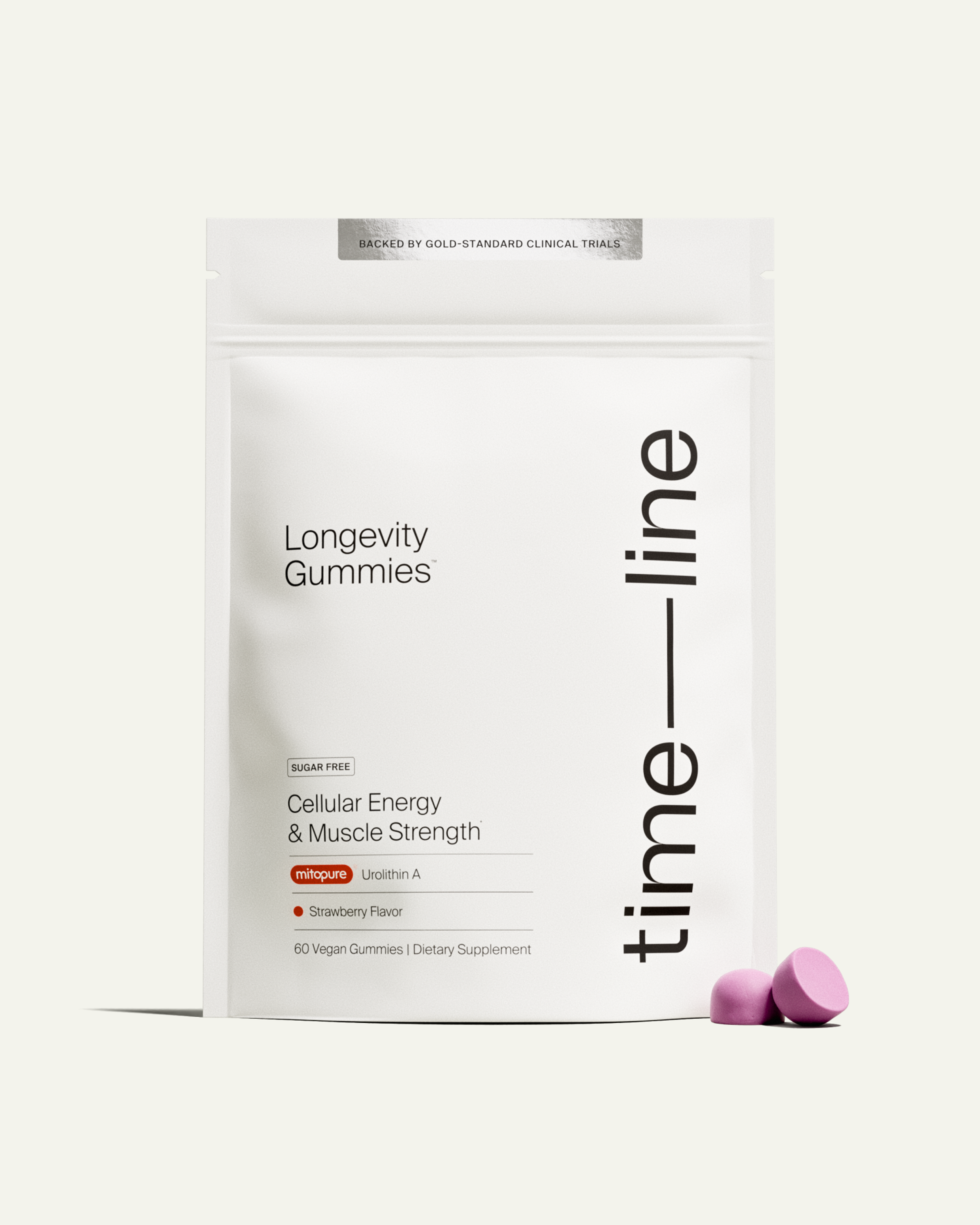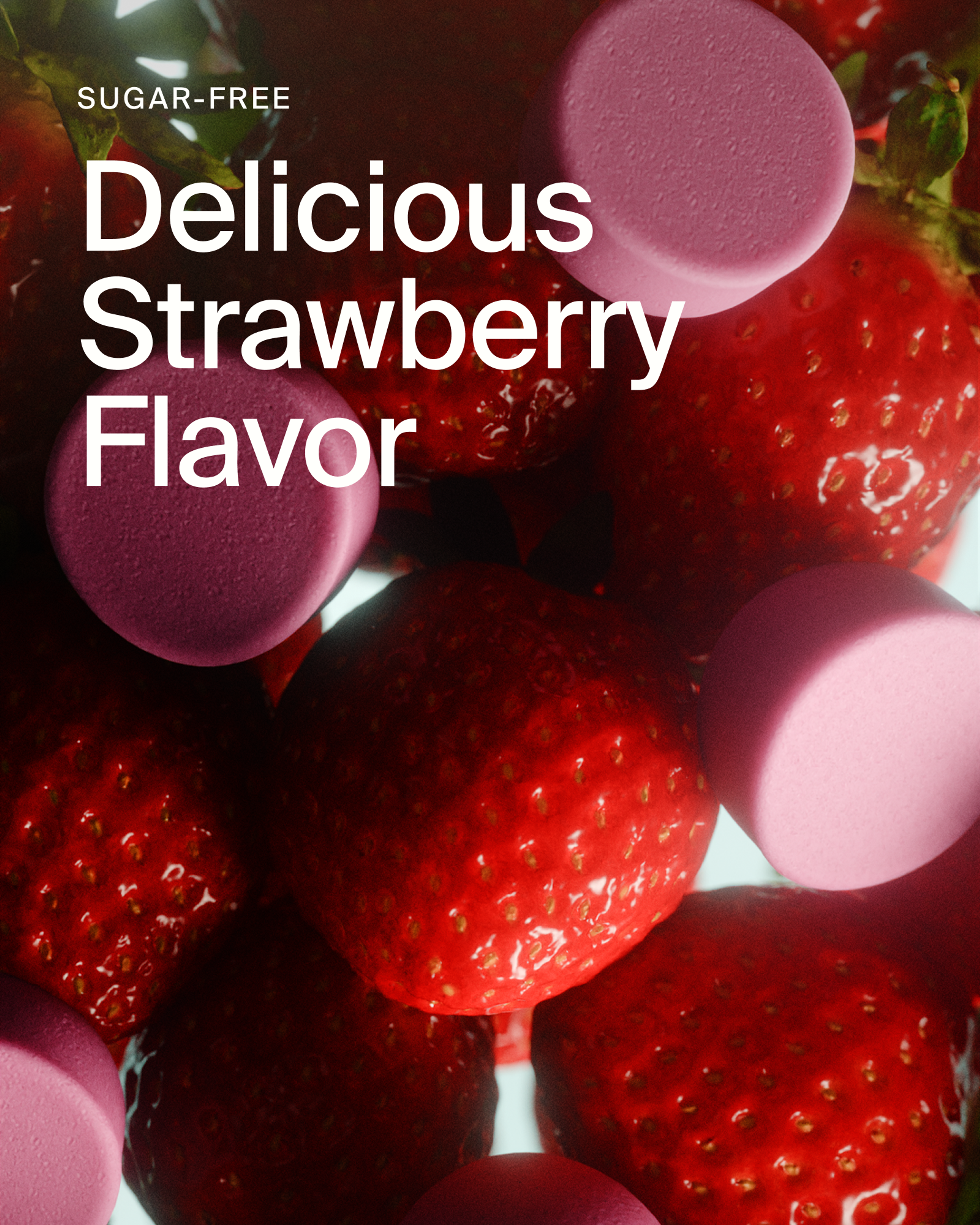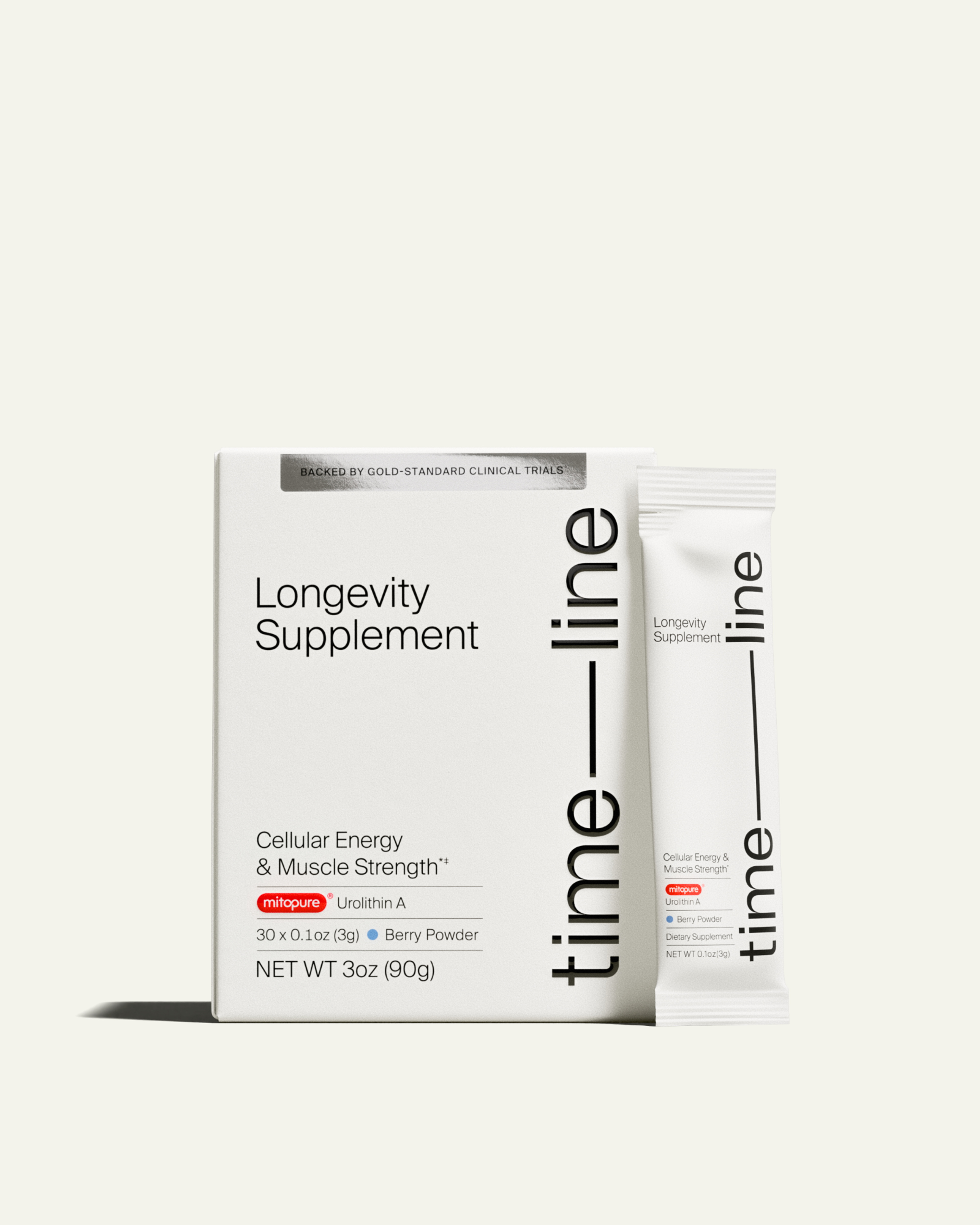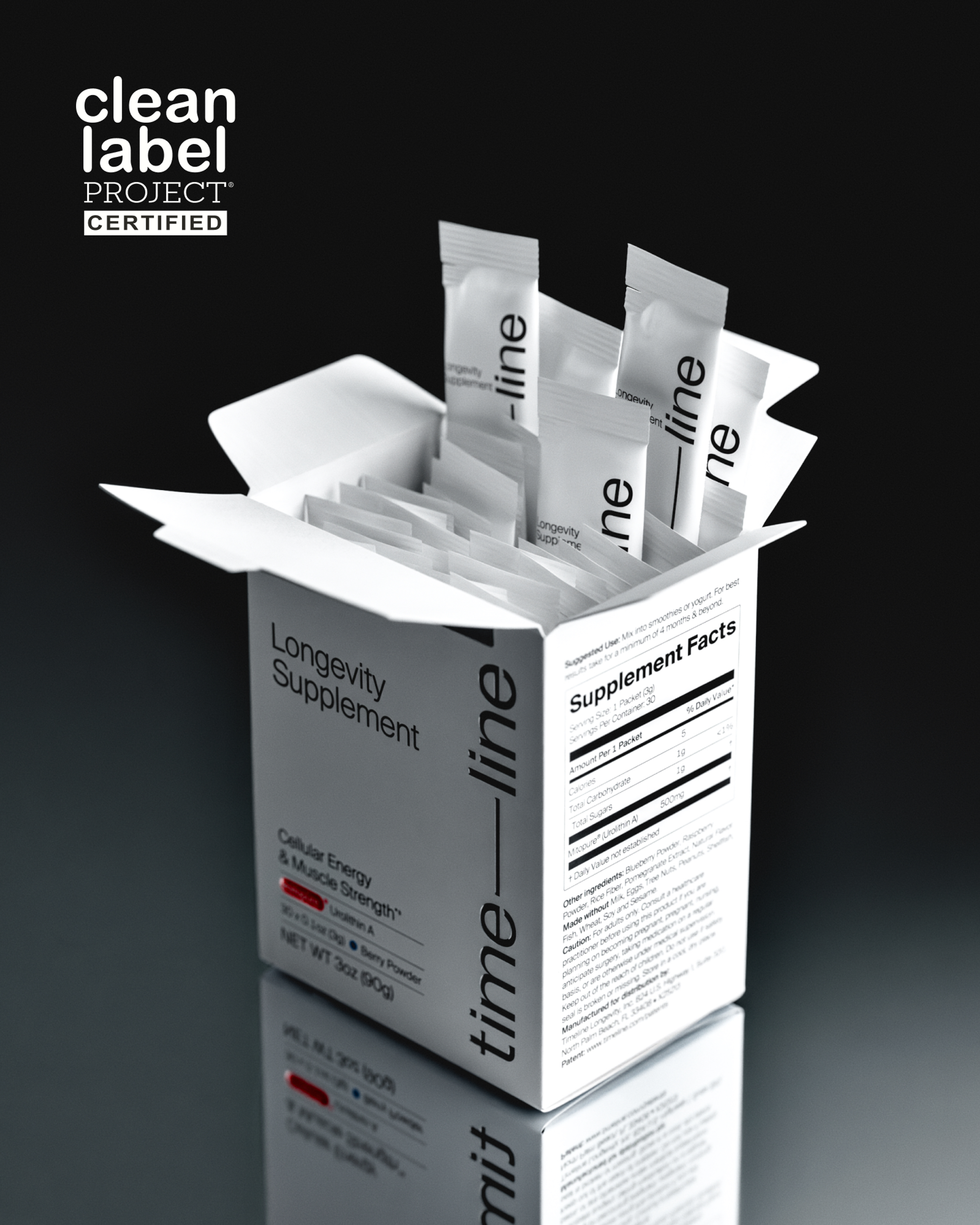Vitamin C benefits: A remarkable nutrient for longevity
Vitamin C benefits to health include its role in longevity, immunity, and more. Learn which foods are high in vitamin C to support lifelong health.

What to know
Vitamin C is an essential antioxidant vitamin for longevity, the immune system, and more.
This vitamin plays a role in longevity by combating free radicals, reducing inflammation, and supporting mitochondrial health.
Vitamin C is found in many foods, such as citrus fruits, strawberries, bell peppers, tomatoes, and potatoes.
Vitamin C, also known as ascorbic acid, is an essential vitamin we often think of in terms of immune health. But did you know it can also support longevity?
While vitamin C has many benefits, this article will focus on vitamin C benefits for longevity. If your goal is to improve lifelong health, you’re in the right place. Let’s understand what the research says on vitamin C and longevity and how you can get in your daily dose for optimal wellness.
Vitamin C 101
Vitamin C is an essential micronutrient - a nutrient needed in small amounts that provides immense health benefits. It is a water-soluble vitamin and, therefore, is excreted from our urine daily. This means you’ll want to get enough every day to keep your levels within a healthy range.
The recommended daily allowance (RDA) for vitamin C is 75 mg for women and 90 mg for men, which can be met through food, supplements, or a combination. If you’re taking a vitamin C supplement, you can take it at any time, with or without food, since it doesn’t need dietary fat to be absorbed.[1]
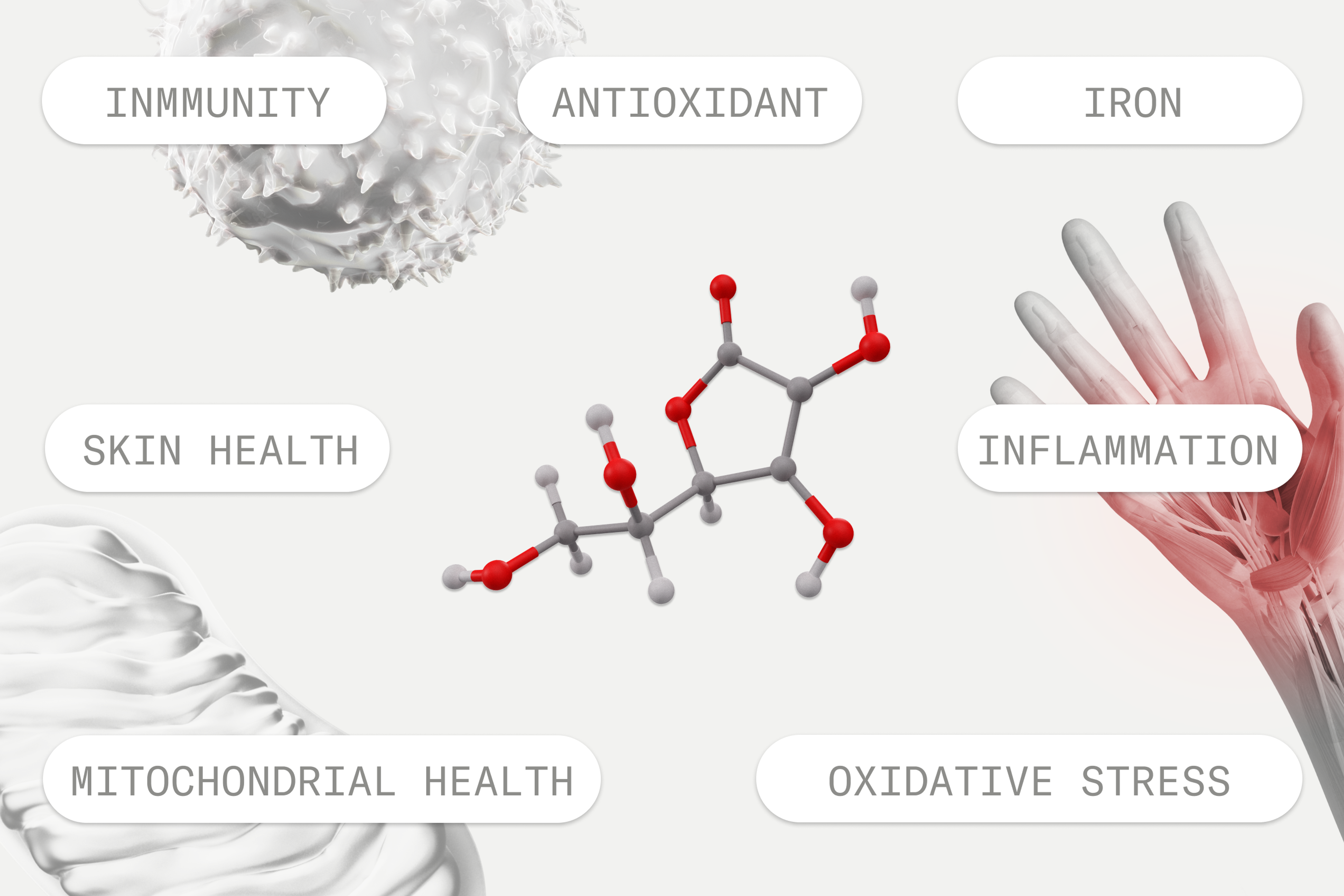
Vitamin C’s role in our body
Ascorbic acid and vitamin C are integral to our daily body functions. As a potent antioxidant, it can delay cellular aging and damage, boost your immune system, and influence skin health.
Antioxidant power
Vitamin C is a robust antioxidant that can help combat free radicals, unstable molecules that can accumulate in the body and accelerate aging. The role of antioxidants like vitamin C includes stabilizing these molecules and keeping more of your cells healthy and well-functioning to support longevity.[2]
Immunity
One of the most well-known benefits of vitamin C is its impact on the immune system. Vitamin C immune support roles involve producing white blood cells that fight infections.[3]
Skin health
Vitamin C also has an impact on skin health. The vitamin C benefits for skin include protection from UV radiation, pollution, and other environmental stressors. The structural protein collagen and vitamin C also work hand in hand to strengthen skin, which can reduce the appearance of fine lines and wrinkles.[4]
Iron absorption
Some studies show that vitamin C may promote iron absorption. This is why consuming vitamin C-rich foods at the same time as iron-containing foods can be helpful, especially with plant-based iron sources that are not as readily absorbed in the body.[5]
Vitamin C’s role in longevity
Vitamin C has been coined one of the essential nutrients for longevity via its influence on inflammation, mitochondrial function, and oxidative stress.
Inflammation
Chronic inflammation is associated with DNA damage and premature aging.[6] Since vitamin C scavenges free radicals that lead to this damage, adequate vitamin C levels are associated with lower markers of inflammation in the body, such as[7] C-reactive protein.
Reduced oxidative stress
When there are too many free radicals in the body, this causes oxidative stress, an imbalance in the body that speeds up the aging process.
As mentioned, vitamin C is an antioxidant that stops free radical activity. Research shows vitamin C may reduce oxidative stress in this way.
Foods rich in vitamin C
There are several delicious food sources of vitamin C.
It’s important to note that vitamin C is sensitive to heat when cooking. Therefore, consuming vitamin C sources in food that are raw or undergo quick cooking methods like steaming is best to ensure optimal nutrient retention.[8]
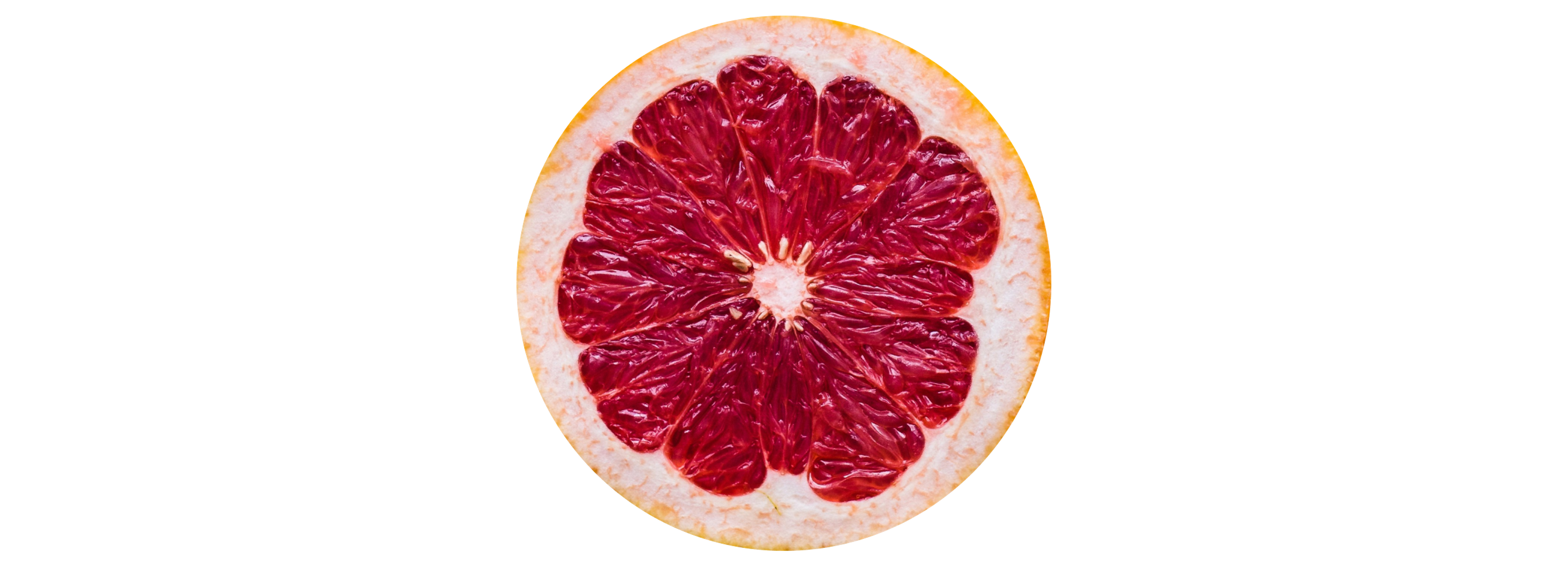
Citrus fruits
Oranges, kiwi, lemon, and grapefruit are some of the top foods high in vitamin C. One medium orange delivers 83 mg of vitamin C, and just half a grapefruit provides 64% of the RDA.[9]
Include these fruits with your breakfast or an afternoon snack, or add lemon to your water for a refreshing twist.

Strawberries
Strawberries are another great vitamin C food source, with 1 cup providing nearly 100% of the daily recommendation.[10]
Add them to overnight oats, a smoothie, or Greek yogurt for a nourishing snack.

Red bell peppers
The red variety contains one of the highest levels of vitamin C in all fruits and veggies. Just one medium red bell pepper contains nearly 150% of the daily value.[11]
Enjoy cut-up peppers with hummus as a snack, or mix them into salads and stir-fries for a delightful crunch.

Broccoli
Broccoli is also an excellent vitamin C food source. One cup of chopped broccoli contains roughly 90% of the daily recommended intake for vitamin C. Delight in a crunchy broccoli snack with dip, steam as a nutritious side, or add to your favorite stir-fry.[12]
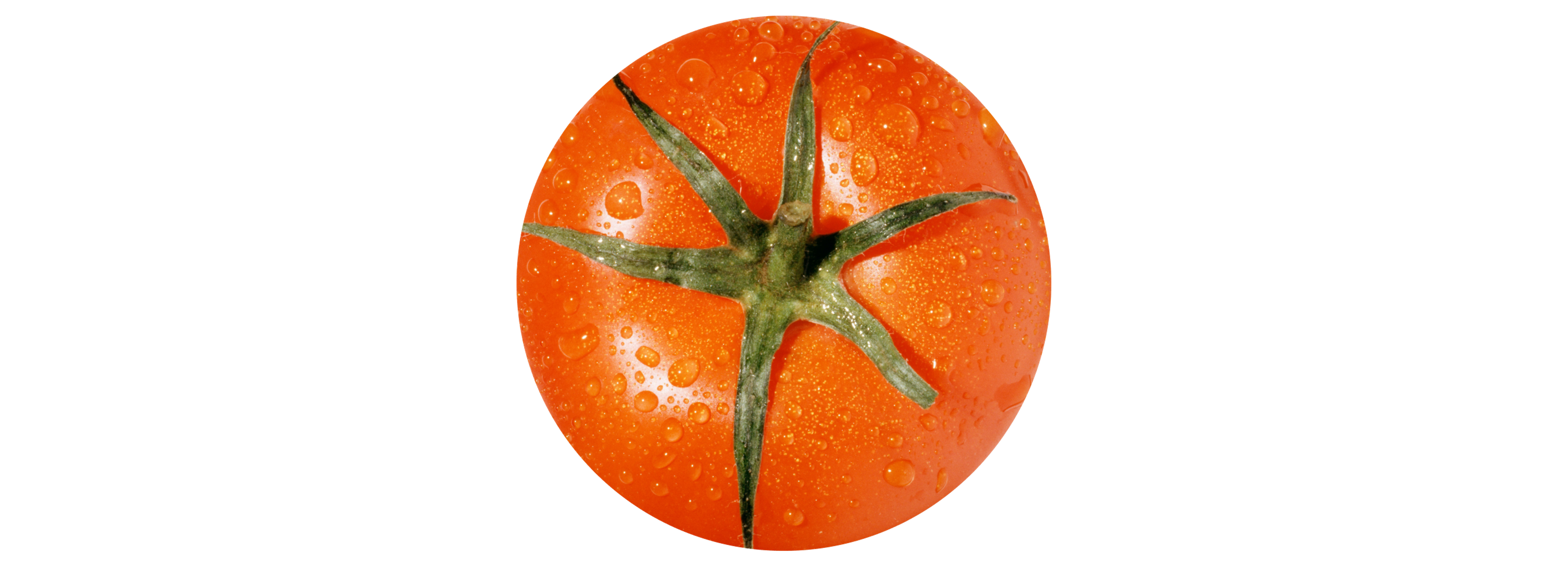
Tomatoes
While not as high as some of these other foods, tomatoes are still a valuable source of vitamin C in the diet, with one medium-sized tomato providing approximately 20% of the RDA for ascorbic acid.[13]
Add them to your salads, slice them into sandwiches, and blend them into flavorful sauces for a vitamin-C-packed meal.

White potatoes
Compared to other potatoes, white potatoes are highest in vitamin C, containing 20-25% of your daily intake in just one medium potato.[14]
Make a potato soup, bake it for an easy side dish, or stuff one with black beans, salsa, and low-fat cheddar for a fiber and vitamin-C-packed weeknight dinner.
Do we really need vitamin C supplements?
While many vitamin C health benefits exist, most people can get enough from a balanced diet. You will likely meet your daily requirements if you eat various fruits and vegetables, including citrus fruits, broccoli, strawberries, tomatoes, and potatoes.
However, if your food intake varies and you’re concerned you may not get enough, you can consider a vitamin C supplement.
Certain habits and exposures, such as smoking, eating too many ultra-processed foods, and environmental exposure, can also increase the risk of deficiency. Signs of vitamin C deficiency include skin rashes and breakdown, fatigue, weakness, impaired immunity, and bone and joint aches.[15]
Many vitamin C supplements contain doses higher than the RDA, and some people choose to take vitamin C supplements to support their general health and immune system.
The daily upper limit for vitamin C is 2000 mg, but taking too much vitamin C is not usually toxic since it is not stored in the body and[16] is excreted in the urine. While uncommon, it’s still possible, and you should always consult your doctor before starting any new supplements.
Wrapping up
In wrapping up, it's clear that vitamin C stands as a cornerstone nutrient in the quest for longevity, offering a myriad of benefits that extend far beyond its famed immune-boosting powers. From its powerful antioxidant capabilities that fend off cellular aging to its vital role in skin health and iron absorption, vitamin C is indeed a superhero in the nutritional world.
While a balanced diet rich in fruits and vegetables can typically meet our needs, supplements offer a viable option for those seeking extra support or facing dietary challenges. As we navigate the path to optimal health, incorporating vitamin C into our daily regimen—whether through diet or supplementation—emerges as a simple yet effective strategy to enhance our well-being..
Remember, the journey to longevity is multifaceted, and vitamin C is but one piece of the puzzle, paving the way toward a healthier, more vibrant life.
Authors

Written by
Dietitian-Nutritionist, and Health Content Writer

Reviewed by
Director Science Communications
References
- ↑
National Institutes of Health. Vitamin C. Last updated March 26, 2021. Accessed January 18, 2024. https://ods.od.nih.gov/factsheets/VitaminC-HealthProfessional/ (https://ods.od.nih.gov/factsheets/VitaminC-HealthProfessional/)
- ↑
Pham-Huy LA, He H, Pham-Huy C. Free radicals, antioxidants in disease and health. Int J Biomed Sci. 2008;4(2):89-96.
- ↑
Kawashima A, Sekizawa A, Koide K, et al. Vitamin C Induces the Reduction of Oxidative Stress and Paradoxically Stimulates the Apoptotic Gene Expression in Extravillous Trophoblasts Derived From First-Trimester Tissue. Reprod Sci. 2015;22(7):783-790. doi:10.1177/1933719114561561
- ↑
- Kawashima, S., Funakoshi, T., Sato, Y. et al. Protective effect of pre- and post-vitamin C treatments on UVB-irradiation-induced skin damage. Sci Rep 8, 16199 (2018). https://doi.org/10.1038/s41598-018-34530-4 (https://doi.org/10.1038/s41598-018-34530-4)
- Gref, R., Deloménie, C., Maksimenko, A. et al. Vitamin C–squalene bioconjugate promotes epidermal thickening and collagen production in human skin. Sci Rep 10, 16883 (2020). https://doi.org/10.1038/s41598-020-72704-1 (https://doi.org/10.1038/s41598-020-72704-1)
- ↑
- Li N, Zhao G, Wu W, et al. The Efficacy and Safety of Vitamin C for Iron Supplementation in Adult Patients With Iron Deficiency Anemia: A Randomized Clinical Trial. JAMA Netw Open. 2020;3(11):e2023644. Published 2020 Nov 2. doi:10.1001/jamanetworkopen.2020.23644
- Piskin E, Cianciosi D, Gulec S, Tomas M, Capanoglu E. Iron Absorption: Factors, Limitations, and Improvement Methods. ACS Omega. 2022;7(24):20441-20456. Published 2022 Jun 10. doi:10.1021/acsomega.2c01833
- ↑
- Pahwa R, Goyal A, Jialal I. Chronic Inflammation. [Updated 2023 Aug 7]. In: StatPearls [Internet]. Treasure Island (FL): StatPearls Publishing; 2023 Jan-. Available from: https://www.ncbi.nlm.nih.gov/books/NBK493173/ (https://www.ncbi.nlm.nih.gov/books/NBK493173/)
- ↑
Ellulu MS, Rahmat A, Patimah I, Khaza'ai H, Abed Y. Effect of vitamin C on inflammation and metabolic markers in hypertensive and/or diabetic obese adults: a randomized controlled trial. Drug Des Devel Ther. 2015;9:3405-3412. Published 2015 Jul 1. doi:10.2147/DDDT.S83144
- ↑
- Lee S, Choi Y, Jeong HS, Lee J, Sung J. Effect of different cooking methods on the content of vitamins and true retention in selected vegetables. Food Sci Biotechnol. 2017;27(2):333-342. Published 2017 Dec 12. doi:10.1007/s10068-017-0281-1
- ↑
- United States Department of Agriculture. Oranges, raw. Published December 16, 2019. https://fdc.nal.usda.gov/fdc-app.html#/food-details/746771/nutrients (https://fdc.nal.usda.gov/fdc-app.html#/food-details/746771/nutrients)
- United States Department of Agriculture. Grapefruit, raw. Published April 1, 2019. https://fdc.nal.usda.gov/fdc-app.html#/food-details/174673/nutrients (https://fdc.nal.usda.gov/fdc-app.html#/food-details/174673/nutrients)
- ↑
United States Department of Agriculture. Strawberries, raw. Published October 30, 2020. https://fdc.nal.usda.gov/fdc-app.html#/food-details/1102710/nutrients (https://fdc.nal.usda.gov/fdc-app.html#/food-details/1102710/nutrients)
- ↑
United States Department of Agriculture. Peppers, sweet red, raw. Published April 1, 2019. https://fdc.nal.usda.gov/fdc-app.html#/food-details/170108/nutrients (https://fdc.nal.usda.gov/fdc-app.html#/food-details/170108/nutrients)
- ↑
United States Department of Agriculture. Broccoli, raw. Published April 1, 2019. https://fdc.nal.usda.gov/fdc-app.html#/food-details/170379/nutrients (https://fdc.nal.usda.gov/fdc-app.html#/food-details/170379/nutrients)
- ↑
United States Department of Agriculture. Tomatoes, raw. Published October 30, 2020. https://fdc.nal.usda.gov/fdc-app.html#/food-details/1103276/nutrients (https://fdc.nal.usda.gov/fdc-app.html#/food-details/1103276/nutrients)
- ↑
United States Department of Agriculture. White potatoes. Published April 1, 2019. https://fdc.nal.usda.gov/fdc-app.html#/food-details/505916/nutrients (https://fdc.nal.usda.gov/fdc-app.html#/food-details/505916/nutrients)
- ↑
Maxfield L, Daley SF, Crane JS. Vitamin C Deficiency. [Updated 2023 Nov 12]. In: StatPearls [Internet]. Treasure Island (FL): StatPearls Publishing; 2023 Jan-. Available from: https://www.ncbi.nlm.nih.gov/books/NBK493187/ (https://www.ncbi.nlm.nih.gov/books/NBK493187/)
- ↑
Singh, A., D’Amico, D., Andreux, P.A. et al. Direct supplementation with Urolithin A overcomes limitations of dietary exposure and gut microbiome variability in healthy adults to achieve consistent levels across the population. Eur J Clin Nutr 76, 297–308 (2022). https://doi.org/10.1038/s41430-021-00950-1 (https://doi.org/10.1038/s41430-021-00950-1)
Disclaimer
The information in this article is for informational purposes only and should not be taken as medical advice. Always consult with your medical doctor for personalized medical advice.

·
Nutrition·
Studies·
